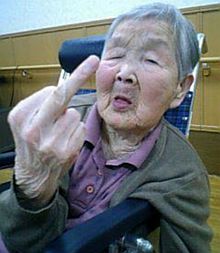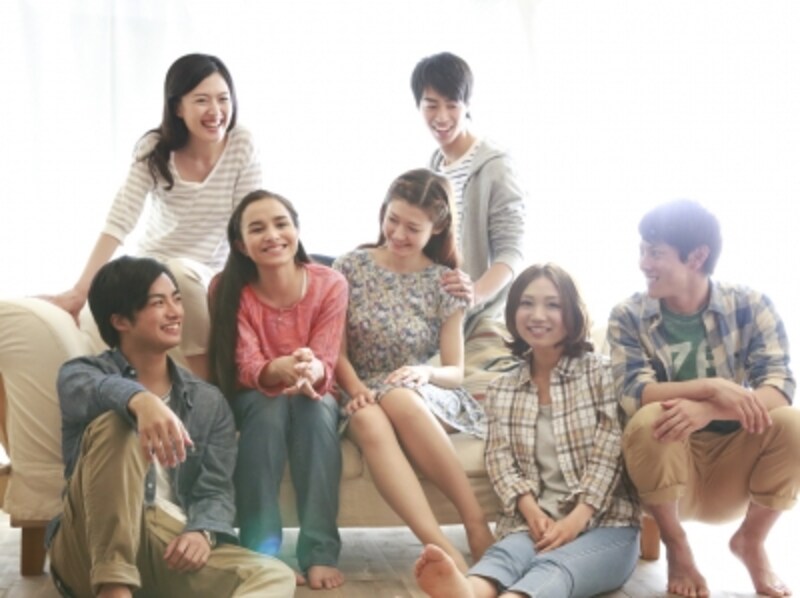
“Inaka” (いなか) is a common word that gets thrown around in the JET program since a majority of the participants are placed there. By definition, it means “country side” or “rural area” and is a big part of Japanese culture that doesn’t always get the attention it rightfully deserves.
As I experience more parts of Japan, I am learning that no two “inaka” are exactly alike. Some are just a quick train ride to Tokyo while others are high up on mountains with only 600 residents. In regards to where I live, I find it pretty funny that those who visit Ishikawa (my prefecture) will call it inaka. Meanwhile those who live in Ishikawa say my city, Suzu, is inaka.
One thing is for certain, if you plan to explore what life in Japan is like, I highly recommend spending part of it in inaka. It will really help you gain a better understanding of Japanese life, traditions, and its people.
But until that day happens, I’d like to share with you my experiences so far, living in Japan’s inaka..
My 6 Ups and 5 Downs of Living in Inaka
DOWN
Japan is expensive, but inaka is more expensive: One of the beliefs of inaka life is that because it is more rural, that it is cheaper to live there. This is sort of true. Sure, things like rent, restaurants, and entertainment may be more expensive in a big city BUT assuming inaka would be cheaper on a day to day basis isn’t exactly true.
 If you are in a place that is further out, it may cost you around $40 – 60 just to see a movie. Since the closest theater is 2hrs away, factoring gas, food, and of course the movie ticket, all have to be accounted for. The same goes for seeing a sporting event, performance, or going to a specialty store.
If you are in a place that is further out, it may cost you around $40 – 60 just to see a movie. Since the closest theater is 2hrs away, factoring gas, food, and of course the movie ticket, all have to be accounted for. The same goes for seeing a sporting event, performance, or going to a specialty store.
Since inaka is generally further out, this also means importing, even domestically, costs more due to the extra mileage. I’ve often found that gas, food, merchandise, and clothes all cost a little bit more when compared to costs in a city.
UP
You have the opportunity to make an impact. Since a majority of foreigners don’t live in inaka, natives have fewer opportunities to interact with people outside of Japan. As a foreigner, your ideas, interests, and beliefs are vastly different from the rest of the community. This gives you a great opportunity to educate those around you and maybe introduce them to a point of view or hobby they’ve never heard of. Something as simple as teaching someone about your hometown’s slang goes a long way.
DOWN

Always watching. Always.
You are always watched. Your mannerisms, your reactions, the clothes you wear, everything is being observed. I have often witnessed people blatantly staring at me and even after being caught, continue their gaze. As uncomfortable as it may be, you’re not being observed in a judging way, but instead, in a “collecting information” way. After all, when you live in a place like myself where you are 1 of about 6 foreigners (out of 12,000 people), doing something differently will not only stick out, but also generate curiosity.
UP
There are a TON of festivals! This is probably one of the best parts of inaka life, and
Kiriko
something you won’t experience much, if at all, in a bigger city. During the summer months, it felt like there was a new festival every week. Each one was hosted in a different neighborhood throughout my city and had taiko drums, food, drinks, fireworks, and kiriko. Kiriko are big towering lantern floats that are carried by the neighborhood’s residents. The bigger festivals have huge towering kiriko and the smaller festivals carry their kiriko throughout the neighborhood, stopping at numerous homes who have people waiting for them to provide food and drinks. Its great a experience and something certainly unique to inaka life.
DOWN
Inaka may not be the best place to learn Japanese, at first. If you are someone with a solid Japanese background, I believe inaka will certainly help you improve. Since English speakers are rare, you’re still able to communicate easily and ask questions about your speaking.
However, if you are like me with little Japanese before arriving, you may learn better being surrounded by people who speak English and Japanese. The difference is FEEDBACK. Feedback is an important tool in learning a language and is something I often don’t receive in the inaka. The drawback of learning Japanese in a city though, is that there are more people who want to practice English with you, thus not having as many opportunities to listen to Japanese. Though, I always notice my Japanese makes huge improvements after spending time in bigger cities.
UP
Obaachan / Ojiichan gone WILD! The old women/ old men here are crazy and they don’t give two shits. You see them ride their scooters in the streets (the wrong way) and push through people like parents at Wal-Mart on Black Friday. Hell, they are on the top of the respect hierarchy and if they lived long enough to get there, more power to them!
 In all seriousness, many inaka towns and villages have a significantly older demographic. With younger people moving to cities, its up to the grandmothers and grandfathers to keep the town running. They farm, construct, and run local shops and restaurants. Back home, most of the people their age will be sitting in nursing homes melting away in front of a TV.
In all seriousness, many inaka towns and villages have a significantly older demographic. With younger people moving to cities, its up to the grandmothers and grandfathers to keep the town running. They farm, construct, and run local shops and restaurants. Back home, most of the people their age will be sitting in nursing homes melting away in front of a TV.
UP
Suzu’s Mitsukejima Island
The agriculture. Like I have said, I am a city boy. I love tall buildings, busyness, and bright lights and sounds. Despite this, living in Suzu has given me the opportunity to appreciate some of Japan’s most beautiful landscapes. I have taken video and pictures of many of these scenes and they never do it justice. Especially Suzu’s Mitsukejima Island. I have seen and taken countless photos yet it never measures up to the real thing in person.
Wajima’s Shiroyone Senmaida (thousand rice paddies)
Another great part of inaka life is knowing where your produce comes from. All you have to do is look out the window or take a walk and see where the food you eat is grown. At the start of every meal, Japanese people say “itadakimasu” which roughly means “I am thankful for this meal.” Living in inaka really makes you think about being much more appreciative when you actually see who makes your food and where it comes from.
UP
DOWN
Loneliness. A combination of smaller populations, fewer things to do, older demographic, less diverse, and the language barrier can make inaka life pretty lonely. I live in a dormitory-like building that houses fellow teachers and city workers. Very few of them live in my town full time. Most of them head back home on their days off which is is anywhere between 45 minutes and 2 and a half hours. Reminds me of college when students went home on weekends (I never understood that).
UP
Personal connection. As lonely as it may be, meeting people and finding things to do is not impossible. Like any good relationship, it requires time and effort. When you finally do make connections with people in inaka, the bond is nothing like you had back home. During some of my rough times living out here, my local friends have truly been my saving grace and given me something to look forward to every time we meet.
Outside of friends, the interactions you have at everyday places is much more intimate. Sit down at a restaurant and the owner will learn your name and have conversations with you. Car shop employees and bank

Random Japanese people hanging together seems appropriate, no?
tellers come to your work to help with whatever tasks you need. These are some of my most favorite things of inaka. Sure its can be annoying when EVERYONE knows you, especially when you make a mistake. But the good side of it is that EVERYONE knows you and wants to make you feel as welcome into their community as possible.
DOWN
Depression on overload. I have chronic depression and my time living in the inaka has brought it out of remission. There is way too much to discuss regarding my depression since being in Japan so I will be writing a full blog post on this topic. However, for now I will say this – if you are someone with chronic depression, and plans to live in Japan, know what makes your depression worse and what makes it better. Depending on you, being placed in a location that makes your depression worse can have some big repercussions. Again, I will touch on this in a future blog post.
Well, there you have it! As you can tell, there are a lot of pros and cons to living in the inaka. As much as I love the city life, I am incredibly grateful for my time out here. I came to Japan wanting to learn more about its culture and way of life, and if I never lived in Suzu, I do not think that would have happened. I now not only have a greater appreciation of rural life, but I’ve met some of the most caring and sincere people on this planet. No matter my next phase after JET, I will always consider Suzu my Japanese home.
Thank you for reading, see ya next time!
Mata Latah!
Pingback: Dealing with Depression in Japan Pt. 1 | A Wicked Ensei